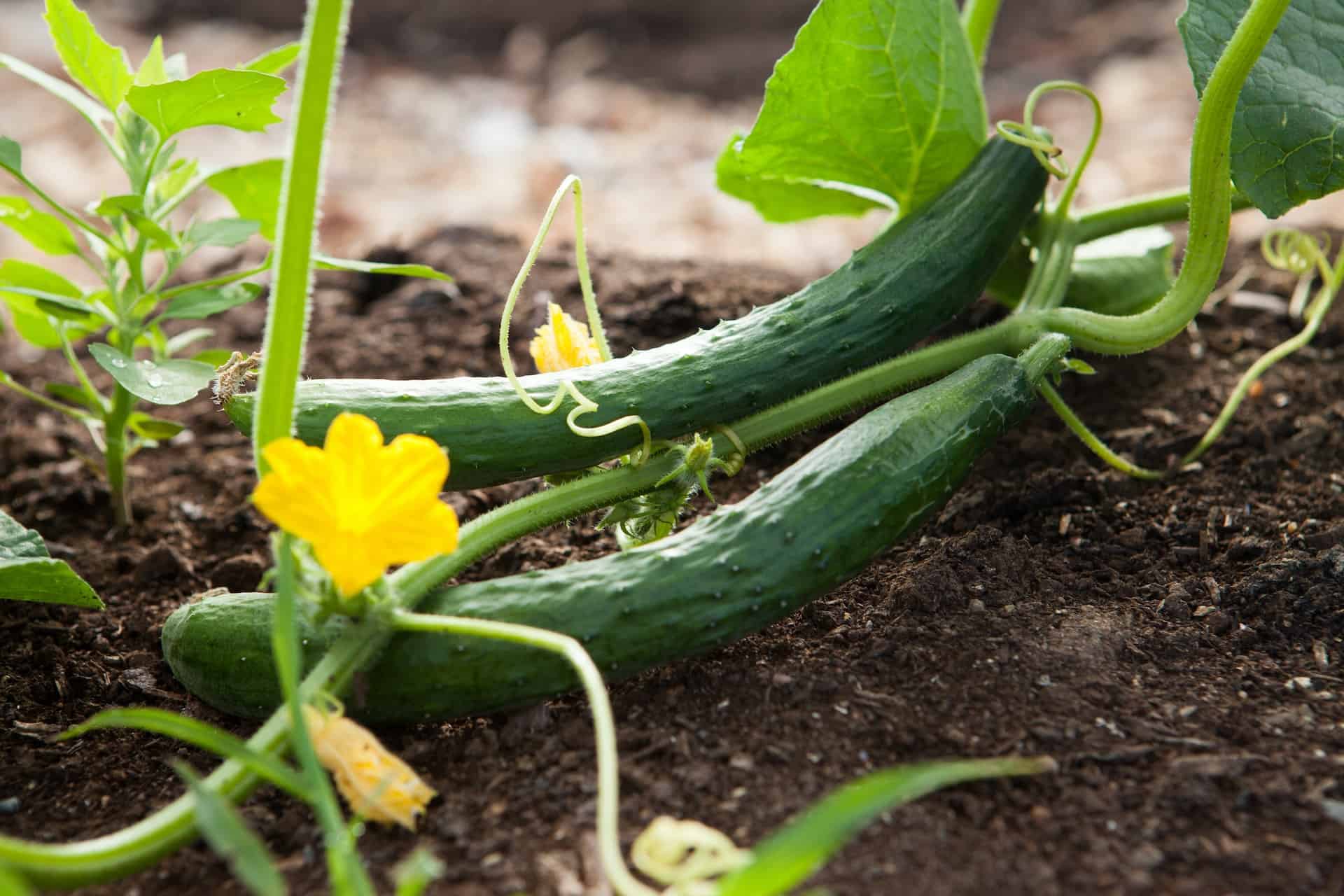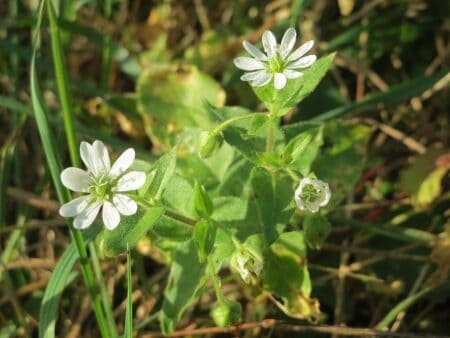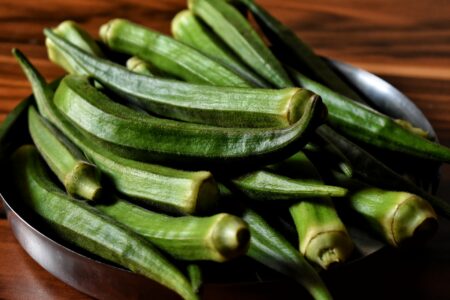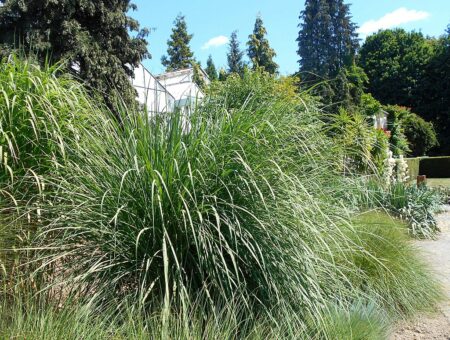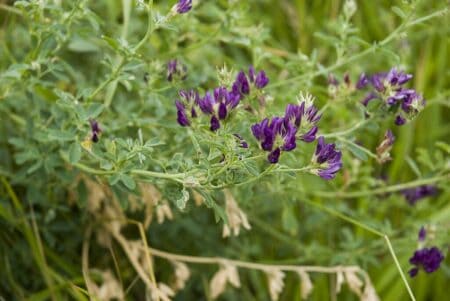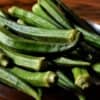Imagine walking out to your garden and plucking a fresh, juicy cucumber right off the vine.
This is a dream come true for many, but the idea of growing your own vegetables can be intimidating, especially for beginners.
This article will guide you through everything you need to know about growing cucumbers, from choosing the suitable variety to harvesting and storing your bounty.
Get ready to impress your friends and family with your green thumb skills and enjoy the taste of homegrown cucumbers all season!
What Is Cucumber?
Cucumbers are a member of the gourd family and are believed to have originated in India over 4,000 years ago.
Today, cucumbers are grown all over the world and come in a variety of shapes and sizes.
Some of the most common types include slicing cucumbers, typically eaten fresh. Pickling cucumbers are smaller and used for making pickles.
Even seedless varieties exist for those who want to avoid the hassle of removing seeds.
But cucumbers are more than just a refreshing snack or pickling ingredient.

They also offer many health benefits, including being low in calories, high in fiber, and a good source of vitamins C and K.
Plus, growing your cucumbers is a fun and rewarding way to get fresh produce from your backyard.
The following section will discuss choosing a suitable variety of cucumbers for your garden.
Cucumbers are closely related to melons and squashes. Still, they are often classified as a type of fruit because they have a hard rind and resemble a small watermelon in shape.
Choosing the Right Variety
When choosing the suitable cucumber variety to grow, it’s essential to consider several factors, such as space, purpose, and climate.
Let’s take a closer look at each factor.
Factor #1: Space
Do you have a large garden with plenty of room for sprawling vines? Or are you working with a small space or container garden?
If you have limited space, look for compact varieties that can be trained to grow vertically, such as ‘Patio Snacker’ or ‘Spacemaster.’
If you have more room, consider varieties known for their vigorous growth and sprawling vines, such as ‘Boston Pickling’ or ‘Straight Eight.’
Factor #2: Purpose
Are you growing cucumbers to eat fresh or to pickle? Some varieties are better suited for one purpose than the other.
For example, ‘Lemon’ cucumbers are small and round, making them ideal for pickling.
Meanwhile, ‘Marketmore’ cucumbers are large and firm, perfect for slicing and adding to salads.
If you want a cucumber that can be used for both fresh eating and pickling, try ‘National Pickling’ or ‘Burpless.’
Factor #3: Climate
Cucumbers are warm-season vegetables and thrive in hot, sunny weather. However, some varieties are better suited for cooler climates.
For example, ‘Divina’ and ‘Suyo Long’ are known for their heat tolerance and perform well in hot, humid climates.
On the other hand, ‘Cool Breeze’ and ‘Armenian’ are more tolerant of cooler temperatures and can be grown in regions with shorter growing seasons.
Here are some other popular varieties of cucumbers to consider:
- ‘Marketmore’: A slicing cucumber that is perfect for fresh eating.
- ‘Lemon’: A small, round cucumber great for pickling.
- ‘Burpless’: A seedless cucumber that is easy to digest and great for fresh eating.
- ‘Straight Eight’: A classic slicing cucumber with a straight shape and crisp texture.
No matter which variety you choose, plant it in fertile soil and provide plenty of water and sunshine.
Preparing the Soil
Now that you’ve chosen the suitable cucumber variety for your garden, it’s time to prepare the soil.
Follow these steps to ensure your soil is ready for planting:
- Choose a sunny location: Cucumbers love sunshine, so choose a spot in your garden with at least 6 hours of direct sunlight daily.
- Test your soil: Cucumbers grow best in fertile, well-draining soil with a pH between 6.0 and 7.0. Test your soil with a pH tester to ensure it falls within this range.
- Amend the soil: If your soil is too acidic (pH below 6.0), add lime to raise the pH. If it’s too alkaline (pH above 7.0), add sulfur to lower the pH. You can also add organic matter, such as compost or aged manure, to improve the soil’s fertility and texture.
- Till the soil: Use a garden tiller or fork to loosen the soil to a depth of at least 12 inches. This will improve drainage and make the cucumber roots’ growth easier.
- Remove debris: Remove any rocks, sticks, or other debris from the soil. This will make it easier for the cucumber seeds to sprout and prevent obstacles from hindering their growth.
Planting Cucumbers
With your soil prepped and ready, it’s time to plant your cucumber seeds.
Here’s what you need to know.
Timing
Cucumber seeds should be planted in the spring after the last frost has passed.
The soil temperature should be at least 60°F (15.6°C) for the seeds to germinate.
Spacing
Cucumber plants need space to grow, so be sure to plant the seeds at least 3 feet (0.9 meters) apart.
If you’re planting multiple rows, space them at least 4 feet (1.2 meters) apart.
Depth
Plant the cucumber seeds 1 inch (2.5 cm) deep in the soil.
Cover them with soil and lightly pat down to ensure good soil-to-seed contact.
Watering
Cucumber seeds need consistent moisture to germinate.
Water the soil immediately after planting, and then keep the soil moist but not waterlogged until the seeds sprout.
Support
Cucumbers can grow on the ground but often produce better if grown on a trellis or support system.
Consider installing a trellis or support system before the plants get too big.
Caring for Cucumbers

Once your cucumber plants have sprouted, keeping them healthy and thriving is essential.
Here are some tips for watering, fertilizing, and preventing pests and diseases.
Watering
Cucumber plants need consistent moisture throughout the growing season.
Water deeply once or twice a week, ensuring the soil is moist but not waterlogged.
Mulching around the plants can help retain moisture in the soil.
Fertilizing
Cucumbers are heavy feeders and require regular fertilization.
A balanced fertilizer with equal nitrogen, phosphorus, and potassium is a good choice.
Apply the fertilizer once a month, following the package instructions for dosage.
Harvesting and Storing Cucumbers

When your cucumbers are ready for harvest, it’s essential to do it at the right time.
Leaving them too long on the vine will produce overripe and bitter fruits.
Here’s how to know when to pick them.
Check the Color
Cucumbers are typically ready to pick when they reach a bright green color, but this can vary depending on the variety.
Size Matters
Most cucumbers are harvested when they reach 6-8 inches (15-20 cm) in length, but this can vary depending on the variety.
The Snap Test
Gently bend the cucumber. If it snaps quickly, it’s ready to be picked.
To harvest, use a sharp knife or garden shears to cut the cucumber off the vine. Be careful not to damage the plant or other fruits.
If you have trouble cutting the cucumber, it may not be fully matured, and you should wait a few more days before trying again.
After harvesting, cucumbers can be stored in the refrigerator for up to a week.
To keep them fresh, place them in a plastic bag and keep them away from ethylene-producing fruits like bananas and tomatoes.
Possible Problems
Cucumbers are susceptible to pests and diseases, including cucumber beetles, powdery mildew, and downy mildew.
Here are some tips for prevention and control:
- Keep the garden clean and weed-free to reduce the risk of pests and diseases.
- Monitor the plants regularly for signs of damage or disease.
- Remove any diseased leaves or plants immediately to prevent the spread of the disease.
- Use natural insecticides or fungicides if necessary, following the package instructions carefully.
Conclusion
You’re now officially cucumber-growing gurus.
But let’s not forget the golden rule: suitable variety, soil prep, consistent watering and fertilizing, and keeping those pesky pests and diseases at bay.
Remember, patience and persistence are essential when growing these delicious veggies.
So get your green thumbs ready, and enjoy the fruits (or veggies, rather) of your labor.

